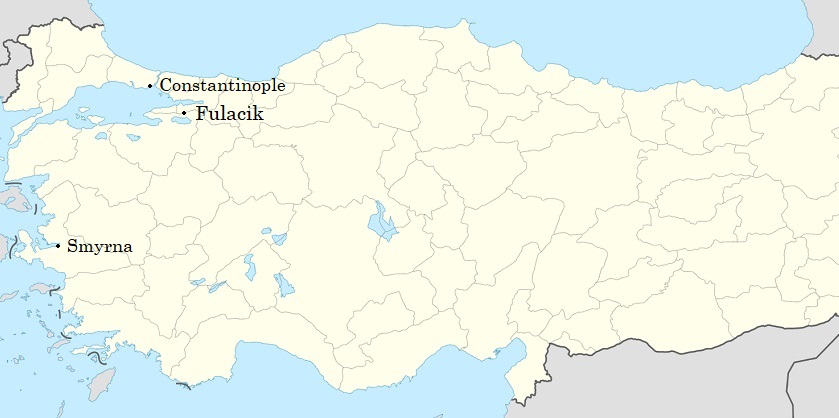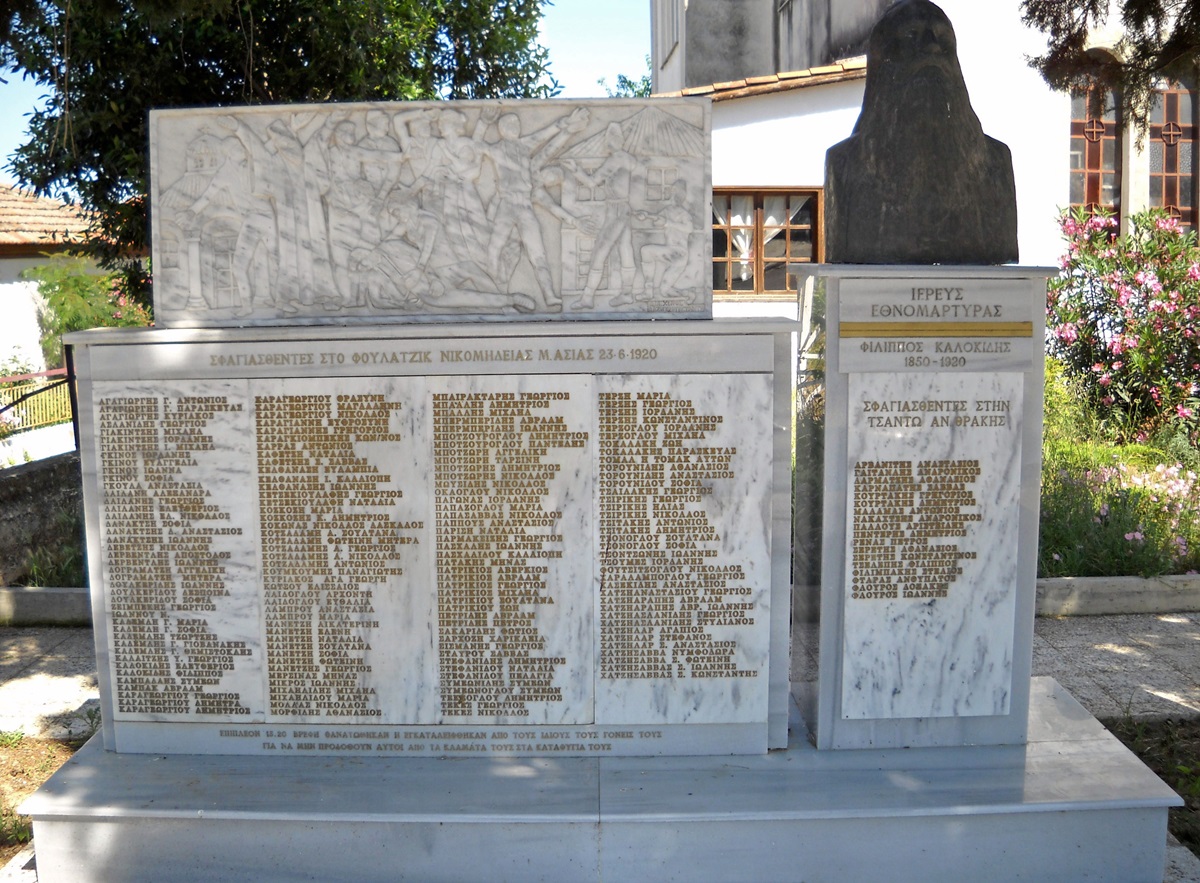
Map of current-day Turkey showing approximate location of Fulacik. Base map credit NordNordWest
The Turk that was setting all the houses on fire also came to my house, tied his horses at the door and poured petrol and then lit it. My house was soon engulfed in fire, so we quickly jumped out through the hole in the back wall. We ran through the path of gunfire. Houses were crackling and then exploding from the fire. Shooting was everywhere and the sound of shouting and swearing by the Turks filled the air.
He continued:
As I was descending into the ravine, I stumbled on corpses of our fellow villagers, and from the light coming from the houses of the upper mahala which by now were fully engulfed in flames, I noticed the dead bodies of Athanasis Tourounoglou, Sophia Tourounoglou, Anastasis Tourounoglou, Ioannis Dervet lis, Apostolos Dervetlis, Ilias Tsorikis, Petros Petridis and others.1
Many of the Greeks of Fulacik fled Turkey and settled in Evropos located in the Kilkis region of Greece. Others settled in Serres and Athens. In 1992, a monument was erected at Evropos to honour the victims of the massacre. The monument was built in 1992 but was redesigned and relocated in 2011 where it currently sits within the grounds of the church of Saint George. The original monument was designed by sculptor Efthimios Kalevras while the current monument was redesigned by Lazaros Tantis.
A large marble plate on the top part of the monument depicts the scene of the massacre while below are the names of those massacred. A bust of Father Phillipos Kalokidis appears to the right. The monument also honours those massacred at Tsanto (today Çantaköy) in Eastern Thrace with the names of those who perished there appearing under the Father's bust. Many Greeks from Tsanto also settled in Evropos after fleeing Turkey.
2. Reports on Atrocities in the Districts of Yalova and Guemlek and in the Ismid Peninsula. London, 1921, p. 11.
The İznik (Nicaea) Massacre, August 1920
These are the Turks
Ortakoy, Bithynia: The Massacres and the Uprooting
The Massacre of Greeks at Konzes, Feb 1921.




